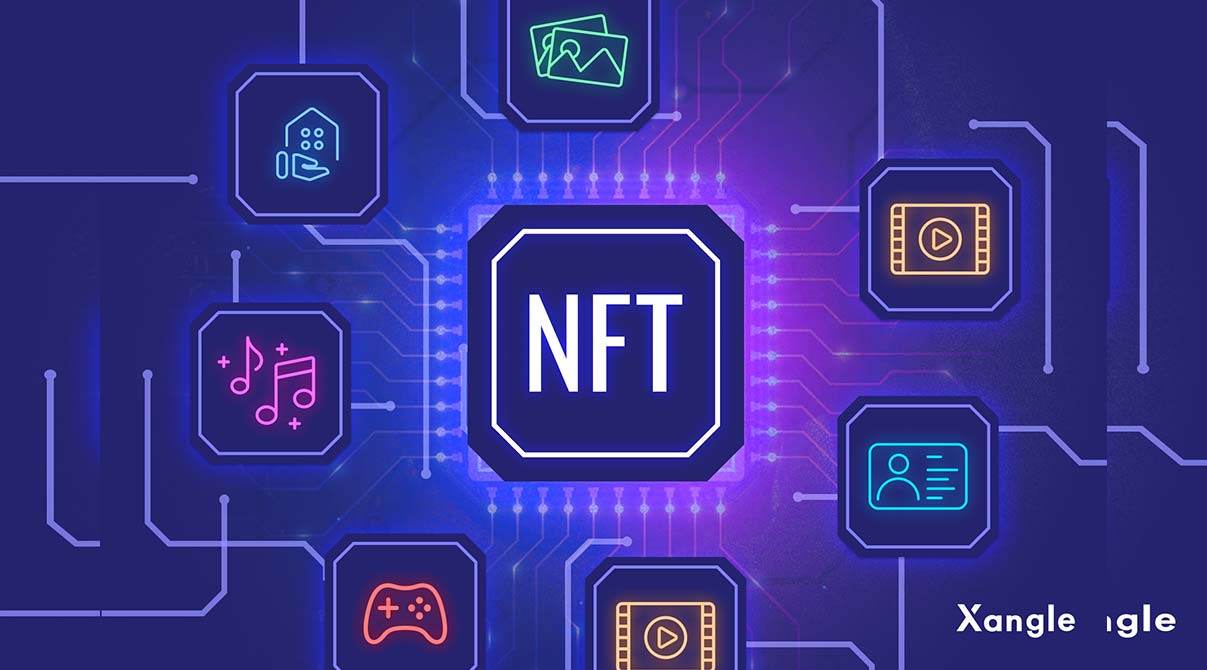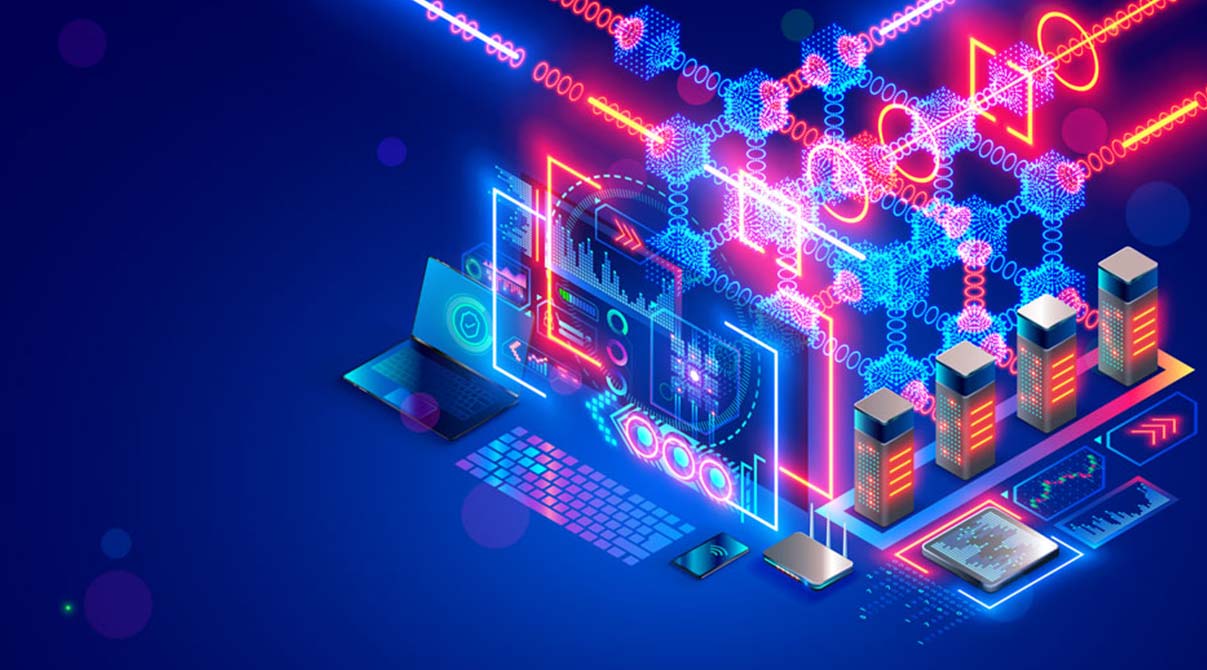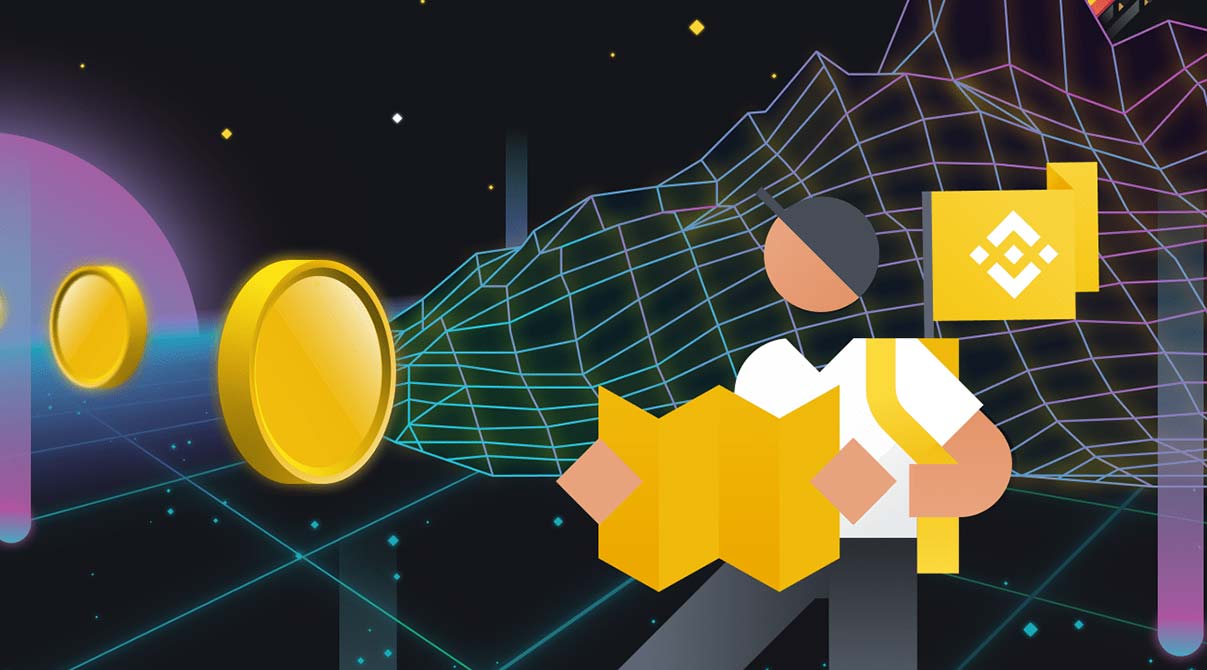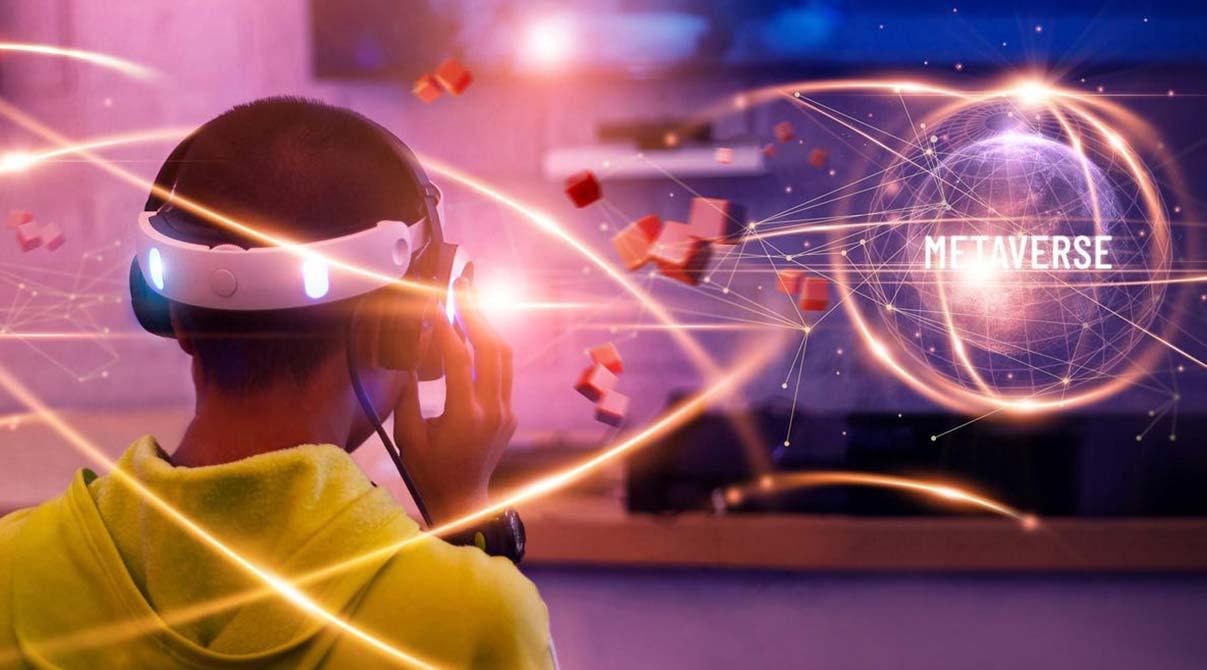In the ever-evolving landscape of the digital world, the intersection of technology and creativity has birthed groundbreaking innovations. One such innovation that has taken the digital realm by storm is the fusion of NFTs with the world of gaming. As the gaming industry continues to expand at an unprecedented pace, NFTs have emerged as a disruptive force, transforming the way players and developers interact with virtual worlds.
This article delves into the meteoric rise of NFTs in gaming and explores the myriad advantages they bring to both gamers and the industry as a whole. From true ownership of in-game assets to new revenue streams for developers, the marriage of NFTs and gaming is reshaping the future of interactive entertainment. Join us on this journey as we unravel the dynamic landscape of NFTs in gaming and how it is redefining the rules of play.
What are NFTs?
NFTs are digital assets, typically built using blockchain technology, that represent a unique item or asset. The most common use cases for NFTs include artwork, collectibles, game items, and virtual land. Each token is completely unique—you can’t exchange it with any other NFT or cryptocurrency—and the blockchain tracks it, allowing for easy verification and transfer without counterparty risk. Unlike cryptocurrencies such as Bitcoin or Ethereum which are fungible (each one is interchangeable with another), NFTs are non-fungible meaning each one has its own distinct characteristics and value depending on the asset it represents.
Examples of Popular NFTs
In 2017, CryptoKitties emerged as an example of an NFT. Players can buy and sell virtual cats online, similar to trading cards or sports memorabilia. Players can purchase, breed and trade virtual cats using non-fungible tokens. Each cat has its own unique attributes and characteristics, making it highly sought after by collectors. The price of these cats can vary depending on their rarity and features, with some being worth thousands of dollars!
Other popular examples include video clips from NBA Top Shot, 3D visuals on SuperRare, digital trading cards on OpenSea and various songs released as NFTs by musicians like Grimes and Kings of Leon. Platforms like Codex Protocol can link physical items like artwork with an Ethereum address, turning them into NFTs.
What is NFTs Gaming?

NFTs gaming is quickly becoming one of the hottest trends in digital gaming. As mentioned earlier, NFTs represent a form of cryptocurrency used for acquiring and storing virtual assets. Various video games and applications utilize these virtual assets. NFTs provide a secure way for gamers to keep track of their virtual items because they prevent the exchange or replacement of these items with another token or asset.
NFTs have become popular in recent years due to their ability to provide gamers with ownership over their game items, giving them control over what happens to these items when the game changes or shuts down completely. This means that if a player has accumulated rare weapons or unique skins within a game, they will still own those even if the game is no longer available. Gamers can purchase rare virtual items such as skins, cosmetics, and other exclusive content and be sure that no one else has access to them.
Unlike traditional online gaming where players compete against each other, NFTs gaming allows gamers to own parts of the game’s environment permanently. So, even if they lose the game, their virtual assets remain secured on their blockchain account forever. Additionally, because these items have real monetary value attached to them, players can use them in investments or trade with other players without any restrictions.
Different Types of NFTs

Majorly, there are seven different types of NFTs that are used in most NFT projects.
Generative Art
Generative art is a type of digital artwork that uses computer algorithms or programmed processes to create unique, aesthetically pleasing works. In recent years, it has gained increasing popularity due to its ability to produce art that humans cannot replicate. As generative art breaks away from traditional forms of art, creators have developed new types of Non-Fungible Tokens (NFTs) to store and trade these digital pieces.
Generative artwork in NFTs specifically utilizes one-time use tokens to prevent duplication and enables artists to create multiple versions of their work while still maintaining control over the sale and distribution with multi-edition tokens. These types of NFTs enable artists to protect their copyright while also allowing them more creative freedom than with traditional methods.
Collectibles
A virtual item’s limited or one-of-a-kind digital collector copy. Usually, it takes the shape of a virtual trading card, a movie, or an original piece of art. Non-fungible tokens (NFTs) let us collect nearly everything that exists in digital form using blockchain technology.
PFPs and Avatars
Another form of NFTs is avatars and PFPs (personalized profile pictures). These two types of NFTs are particularly popular because they allow people to express themselves in unique ways online.
PFPs represent an individual’s online identity and personal brand. Users often carefully choose a photograph or artwork to feature, reflecting their interests or persona. On the other hand, avatars represent 3D human figures used for gaming and virtual reality applications. They often come with customizable features like hair color, clothing options, facial expressions and more.
Related: Top 10 Gaming Phones in Pakistan
Gamified NFTs
As the technology advances, developers are now introducing gamified NFTs which offer even more innovative and exciting ways to own digital assets. Gamified NFTs combine blockchain-based tokens with gameplay elements such as achievements, avatar customization, and leaderboard rankings. They open up a range of possibilities for gamers looking to add value to their virtual collections.
There are several types of gamified NFTs available today. Some of these include Asset Collection NFTs which provide players with access to characters and other digital items within a game; Leaderboard Ranking NFTs that keep track of player rankings; and Avatar Customization NFTs which allow users to customize their in-game appearances.
Photography NFTs
Photography NFTs have revolutionized the way photographers are able to monetize their images. The newfound success of these digital tokens has fostered a renewed appreciation for digital art and photography, as they now find themselves traded openly in the market.
There are several types of photography NFTs available on the market today. The most common type is a single image token that represents an individual photograph or artwork. Gamers and collectors can purchase and resell this type of token on various platforms and exchanges such as OpenSea or Rarible. Another popular form of photography NFT is a series-based token that includes multiple images linked together as one item.
Music NFTs
Music NFTs provide musicians with unique opportunities to monetize their art. There are several different types of Music NFTs currently available on the market. One type is a “collectible” which provides purchasers with exclusive access to bonus content such as unreleased songs, footage from live performances, behind-the-scenes videos, and more. Another type is the “access token” which grants users access to special events like live concerts or exclusive streaming services.
One-of-one (1/1) Artwork
Buyers are drawn to one-of-one artwork as an attractive type of NFT because it grants them a sense of exclusivity and rarity that exists nowhere else. These digital works can range from drawings, paintings, 3D renders and animations to more complex interactive pieces like video games and virtual reality experiences.
Blockchain: The Technology Behind NFTs

Blockchain technology has revolutionized the way we share and secure information. It comprises a decentralized digital ledger that securely stores data in an immutable manner, ensuring that the data cannot undergo alterations or deletions without explicit permission from all involved parties. In recent years, various industries, including finance, healthcare, and retail, have actively embraced blockchain, propelling its widespread adoption.
How Blockchain Works?
At its core, blockchain technology works through a process known as consensus algorithms. Multiple parties come together to agree on a particular transaction or piece of information before adding it to the chain in this process. In this way, blockchain technology eliminates any need for intermediaries like banks or third-party services required to facilitate transactions.
Moreover, cryptographic techniques securely link each block of data to previous blocks, rendering it impossible to modify the original data without also altering future blocks. This ensures that no single user can control or delete any transaction within the network; which helps create trust between users with less fear of manipulation or fraud.
Related: Gaming In Pakistan
Blockchain Technology in Gaming Industry
Within traditional games, currency only moves in one way, gamers must pay to unlock premium features and in-game items. However, games that use blockchain technology, many of which are decentralised applications (dApps), place a greater emphasis on providing value to users. With the help of this dynamic, players may now better understand the value and usability of the items they’ve obtained through in-game purchases, ordinary gameplay, or marketing campaigns.
However, developers can tokenize the same armor in a way that transforms in-game transactions into transferable resources capable of bestowing advantages across connected games or trading for cash or other digital assets within a gaming environment utilizing cross-platform NFTs.
Underlying blockchain technologies enable the generation and deployment of these NFTs across various gaming settings. Blockchain-built games can substantially expand gaming economies, establish new gaming classes, and facilitate the development of additional games, as NFTs retain their distinctiveness and creators can preserve their value beyond their original game of origin.
The Benefits of Gaming NFTs

In recent years, the world of gaming has seen exciting new developments through NFTs. These revolutionary digital assets, which are stored on a blockchain, provide gamers with unparalleled benefits, as explained below:
Ownership
Ownership is one of the biggest advantages that gamers gain from using NFTs. Players can purchase, sell, or trade digital items with other users without any central authority mediating the transaction. This creates a truly peer-to-peer system where each user holds complete control over their items, making it harder for malicious actors to manipulate or steal them. As a result, players can rest assured knowing that their investments are protected from fraud and price manipulation.
Provable Scarcity
NFTs offer an unprecedented level of authenticity to gamers, allowing them to own digital assets with confidence. One of the most attractive features of gaming NFTs is their ability to bring tangible value to gamers. Their provable scarcity and rarity result from the uniqueness and impossibility of replication or duplication of each asset. This enables the sale of digital goods like virtual land in video games, items from loot boxes, rare skins, and other collectibles on secondary markets for profit.
Related: How to Play Chess Like a Pro: 15 Steps with Pictures
Interoperability
Interoperability is a key factor when it comes to gaming NFTs, as it allows gamers to move their digital assets from platform to platform without any loss of functionality or quality. This means that no matter where you play your favorite game, you are able to keep track of your progress and access all the same content. Additionally, it gives players more control over their in-game purchases and investments by allowing them to diversify their portfolios across different games and platforms simultaneously.
Immutability and Security
NFTs offer an unprecedented level of immutability when it comes to gaming items. Immutability is the assurance that a game asset cannot be counterfeited, stolen or hacked due to its blockchain-based foundation. Immutability offers gamers several advantages when playing with NFTs. First, they can rest assured that their collectible game items remain safe and secure on the blockchain. Furthermore, they can trust that any transaction involving their NFTs will be completed without error or interruption from outside actors.
Income Generation
By investing in gaming NFTs, investors can not only earn rewards but also benefit from the potential to generate passive income. Gaming NFTs provide a great way for gamers and investors alike to make money by playing their favorite games. These tokens can be used to purchase items within individual games such as weapons and armor, or they can be traded between players or exchanged for real-world currency.
For instance, Play-to-Earn (P2E) games allow gamers to earn money, rewards, or items for playing their favorite games. In particular, NFTs enable players to upgrade their gaming experience while they participate in various activities within the game world such as trading, building and collecting exclusive items. Players can also take part in competitions or tournaments on platforms like Blockchain Cuties Universe that offer attractive prizes for winners.
Community Gaming
The integration of blockchain technology into the gaming industry has made it possible for users to better interact with their peers while engaging in virtual gameplay. By using NFTs in gaming, users can create an immersive experience that encourages community building and collaboration between players.
Drawing Venture Capital
NFTs are offering unprecedented access to new forms of liquidity for gaming developers and players alike. Through tokenization, game developers can create virtual marketplaces where gamers can buy, sell and trade rare or unique items within the game. This unlocks opportunities for businesses to draw investment capital from venture capitalists interested in investing in virtual economies.
Venture capitalists recognize the potential of digital assets as a secure form of valuable collateral that can be used to generate returns on investments over time. As more venture capitalists get involved with NFT gaming projects, they benefit from increased exposure, liquidity and monetization options while also helping the games they invest in become more popular.
Uncrowded Market
In the highly competitive world of gaming, Non-Fungible Tokens (NFTs) have provided a unique and unprecedented opportunity for game developers to establish their brand and become top-notch players in the market. Since these digital assets exist on a blockchain; that is to say they are verifiably unique, scarce, and immutable; game developers can access an uncrowded market that offers less competition than traditional gaming markets.
Related: Pakistani Gamer Arslan Ash Bags Combo Breaker Title at International Tekken 7 Competition
Scalability
The gaming industry is one of the fastest growing sectors in the world. With new technologies and virtual worlds being introduced, it is no wonder that gamers are adapting to a more scalable market. It presents a fantastic chance for game creators to maintain their place in the business because NFT gamers are constantly searching for novel games that can captivate them and enable them earn as well as invest in cryptocurrencies.
Players’ Experiences in NFTs Gaming

NFTs are becoming an integral part of a gamer’s experience, with some players going as far as to spend thousands of dollars on virtual goods and collectibles created with blockchain technology. With more and more gamers getting involved in the burgeoning industry, it has become important to understand how NFTs are impacting their experiences.
The experiences of NFTs players are varied and diverse. Many report feeling excited by being able to invest in something new and different while simultaneously enjoying strong returns on their investments. Others find it easier to track their assets with blockchain technology as opposed to traditional methods like paper documents. Some even find that they’re able to interact with fellow traders more easily due to decentralized exchanges that NFTs use for trading purposes.
Moreover, players of games that incorporate NFTs into their gameplays report a heightened level of engagement and involvement. Many enjoy being able to own virtual assets within the game that can appreciate or depreciate in value, allowing them to make financial decisions based on market trends. Furthermore, some players have even been able to use their digital collections as investments for real world returns.
The Future of Gaming NFTs

NFTs, or non-fungible tokens, have become a hot topic in the gaming industry recently. These unique digital assets are revolutionizing the way players buy and sell virtual items within their favorite games. NFTs are already being used to create powerful new experiences that offer gamers the chance to own exclusive digital assets. And experts predict that this technology will only become more prevalent in the near future.
In addition to allowing for ownership of rare digital assets, gaming NFTs could be used for much more than just buying and selling items. The potential applications of NFTs also include enabling microtransactions and creating a secure system for unique tournaments and competitions within popular games. This would allow developers to support their gaming ecosystems while also giving players an incentive to engage with game content on a regular basis through rewards or prizes.
Despite some obstacles, the potential for financial gain in the gaming sector will spur more brands that are not blockchain-focused to experiment with NFTs. They will probably do this by collaborating with other blockchain initiatives that have the necessary technical know-how to realise their vision. Simultaneously, the general popularity of gaming dApps may probably contribute to further stimulating advances in NFT infrastructure and driving the creation of novel solutions that open up widespread usage.